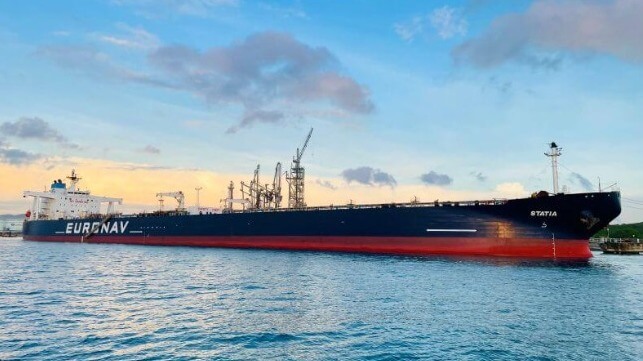Prime Time for Tankers as Sanctions Hit Russian Oil

Day rates for VLCCs, Suezmaxes and Aframaxes have surged above $100,000 per day, according to Clarksons, and the good times for tanker owners may be just beginning. New EU sanctions on Russian crude take effect December 5 and are certain to increase tonne-miles. European nations are scrambling to find alternative suppliers from other regions, and Russia will have to ship oil longer distances to reach to buyers in Asia. The longer voyages will soak up tanker tonnage, tightening the market and boosting prices.
How far up could rates go? Potentially as high as $150,000 and $200,000 a day, according to Jefferies head of shipping research Omar Nokta.
These rates are exceptionally profitable, and the market thinks that this is great news. The share price of tanker giant Euronav has risen by 70 percent in the past six months, reflecting expectations of more good times to come. Nordic American is up by 60 percent, Frontline by 60 percent, Teekay by 70 percent, Tsakos Energy Navigation by 80 percent, International Seaways by 85 percent, and the list goes on.
There are structural reasons to expect that the tight market will last for some time. The orderbook for new tankers is slim, and the average age of the global fleet is relatively high, suggesting that the pace of demolition will balance out new deliveries. More than one quarter of the global tanker fleet will be over the usual retirement age of 20 years by next year, according to VesselsValue. Some of these elderly vessels will likely transition into the "dark fleet" of sanctions-evading tankers, which serve Iran and Venezuela (and are beginning to serve Russia as well).

that matters most
Get the latest maritime news delivered to your inbox daily.
LNG carriers are doing even better. Vessels not locked into long-term contracts are raking in staggering spot rates in the range of $450-500,000 - enough to charter a high-spec drillship. The shutdown of Russian pipeline gas supply to Europe has led to a rapid ramp-up in demand for LNG and a proliferation of liquefaction terminal projects in Europe. High EU prices have drawn cargoes from far-flung suppliers located half a world away - and this is a bonus for LNG carrier owners, who reap the benefits from long journeys and long waits outside of port.
The European market is buying so much liquefied gas that LNG carriers have been stacked up waiting to offload. As of last week, there were about 40 LNG carriers in use as floating storage, primarily in Europe, according to Flex LNG CEO Oystein Kalleklev.
